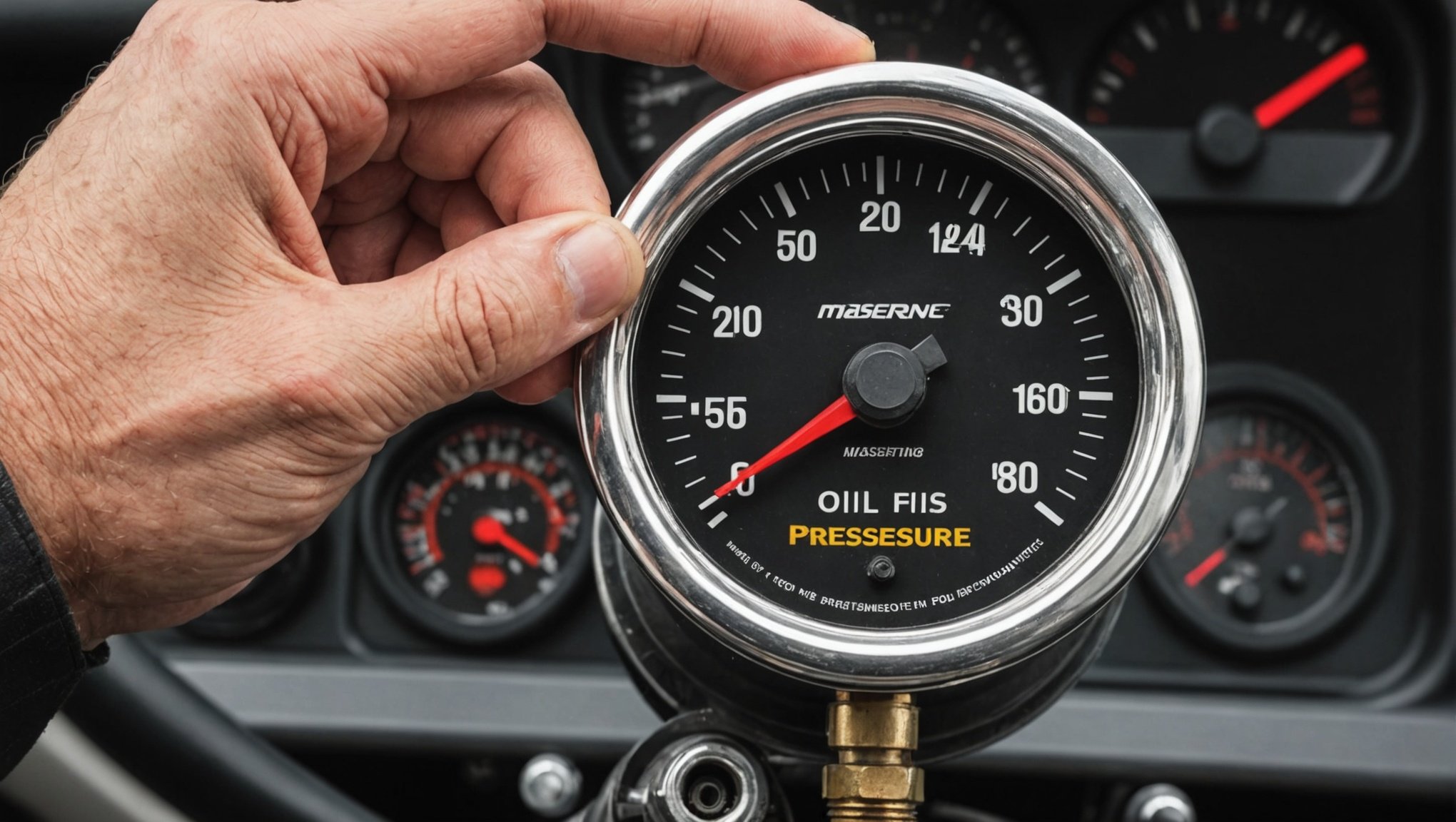Ensuring proper oil pressure is essential for maintaining the performance and longevity of your classic British car. This guide provides step-by-step instructions to precisely measure and adjust oil pressure, allowing you to optimise your vehicle's performance and safeguard its mechanical integrity. Whether you’re a seasoned mechanic or an enthusiastic novice, mastering these techniques will enhance your driving experience and preserve the charm of your classic ride. Let’s get started on fine-tuning one of the most vital aspects of your engine.
Understanding Oil Pressure in Classic British Cars
In classic British cars, oil pressure plays a crucial role in maintaining optimal engine performance. It ensures that all moving parts are properly lubricated, reducing friction and preventing wear. Adequate oil pressure is vital for the engine's cooling system, as it helps dissipate heat generated during operation.
Topic to read : Mastering Wheel Balance for British Racing Cars: Achieving Peak High-Speed Stability
The Role of Oil in Lubrication and Cooling
Oil serves as a lubricant, creating a thin film between metal surfaces to minimize contact and friction. This lubrication is essential for the smooth operation of an engine, especially in classic British cars known for their intricate engineering. Moreover, oil aids in cooling by absorbing heat and transferring it away from critical components, thus preventing overheating.
How Oil Pressure Affects Engine Performance and Longevity
Maintaining proper oil pressure is key to ensuring the longevity of an engine. Insufficient oil pressure can lead to increased friction, causing components to wear out more quickly. Over time, this can result in decreased engine performance and potential failure. On the other hand, excessive oil pressure might cause leaks or damage seals. Regular monitoring and maintenance of oil pressure can help preserve the engine's health and performance, allowing classic British cars to run smoothly for years.
Also read : What is the best strategy for removing scratches from your UK car’s exterior?
Tools and Equipment for Measuring Oil Pressure
To ensure your classic British car's engine runs smoothly, using the right tools and equipment is crucial for measuring oil pressure. An oil pressure gauge is an indispensable tool in this process. It provides accurate readings, helping you maintain optimal engine performance. When selecting an oil pressure gauge, consider models known for their reliability and precision, such as mechanical gauges, which are often preferred for their durability and ease of use.
When measuring oil pressure, safety should not be overlooked. Always wear protective gear, including gloves and safety glasses, to prevent injuries from hot oil or moving parts. Additionally, ensure the engine is off and cool before beginning any measurements to avoid burns and other accidents.
For accurate results, use quality tools specifically designed for automotive applications. This may include adapters and fittings compatible with your vehicle's engine. Investing in a high-quality oil pressure gauge and the necessary safety equipment will not only help in obtaining precise readings but also contribute to the longevity and performance of your classic British car's engine. Regular checks with the right tools can prevent potential issues and keep your vehicle running smoothly.
Step-by-Step Guide to Measuring Oil Pressure
Measuring oil pressure accurately in a classic British car is essential for maintaining engine health. This step-by-step guide will help you achieve precision measurement.
Preparing Your Classic British Car
Before you begin, ensure your car is on a level surface and the engine is cool. This prevents inaccurate readings and ensures safety. Gather your tools, including an oil pressure gauge, and wear protective gear. Disconnect the battery to avoid any accidental starts.
Connecting the Oil Pressure Gauge
Locate the oil pressure port on your engine. This is typically near the oil filter. Remove the existing sender or plug and attach the gauge using the appropriate adapter. Ensure all connections are secure to prevent leaks.
Interpreting the Readings
Start the engine and observe the gauge. A healthy engine typically shows oil pressure between 20 to 60 psi. Low readings could indicate insufficient lubrication, while high readings might suggest a blockage. Compare the readings against your car's specifications to determine if adjustments are necessary. Regularly monitoring and interpreting these readings can help you maintain optimal engine performance and longevity.
Adjusting Oil Pressure: Techniques and Tips
Adjusting oil pressure in classic British cars requires careful attention to detail and adherence to manufacturer specifications. Proper techniques ensure your engine runs smoothly and efficiently.
Methods for Adjusting Oil Pressure
One common method for adjusting oil pressure involves modifying the oil pump. This can be done by changing the pump's relief valve spring, which controls the maximum pressure. Alternatively, installing a high-volume oil pump can increase overall pressure. However, these adjustments should be made cautiously, as excessive pressure can damage engine seals.
Importance of Following Manufacturer Specifications
It's crucial to follow the manufacturer's guidelines when adjusting oil pressure. Each engine is designed with specific tolerances and operating pressures in mind. Deviating from these specifications can lead to engine damage or reduced performance. Always consult your vehicle's manual or a professional mechanic before making any adjustments.
Common Challenges and Solutions
One of the main challenges in adjusting oil pressure is ensuring the changes do not lead to leaks or reduced lubrication. To overcome this, regularly monitor the oil pressure gauge and inspect for any signs of leaks. If issues arise, reassess the adjustments and consult a professional to ensure your classic British car maintains optimal performance.
Troubleshooting Low Oil Pressure Issues
Experiencing low oil pressure in classic British cars can be concerning, but understanding the symptoms and solutions can ease the troubleshooting process.
Identifying Symptoms of Low Oil Pressure
Low oil pressure often manifests as a warning light on the dashboard or unusual engine noises, such as knocking or ticking. These symptoms indicate insufficient lubrication, which could lead to increased wear and potential engine damage if not addressed promptly.
Steps to Diagnose the Underlying Causes
Diagnosing low oil pressure involves several steps. First, check the oil level and quality; dirty or low oil can cause pressure drops. Inspect the oil filter for clogs, as blockages can impede oil flow. Additionally, examine the oil pump for wear or damage, which could affect its ability to maintain pressure.
Solutions and Repairs for Resolving Low Oil Pressure
Resolving low oil pressure requires targeted repairs. If the oil is dirty, perform an oil change to restore proper lubrication. Replace clogged filters to ensure smooth oil flow. If the oil pump is faulty, consider replacing it to regain optimal pressure. Regular maintenance and monitoring can help prevent these issues, ensuring your classic British car's engine remains in excellent condition.
Safety Precautions When Working with Oil Pressure
When engaging in oil pressure maintenance for classic British cars, adhering to safety precautions is paramount. These measures protect both you and your vehicle from potential hazards.
Importance of Safety When Measuring and Adjusting Oil Pressure
Working with oil pressure involves handling hot oil and moving engine parts, which can pose risks. Ensuring safety not only prevents injuries but also safeguards the integrity of your car's engine. By following best practices, you minimise the chance of accidents and ensure accurate measurements and adjustments.
Recommended Safety Gear and Practices
To maintain a safe working environment, equip yourself with appropriate safety gear. Essential items include:
- Gloves: Protects hands from hot oil and sharp components.
- Safety glasses: Shields eyes from oil splashes and debris.
- Protective clothing: Prevents burns and cuts.
Ensure the engine is turned off and cool before starting any work. Disconnect the battery to avoid accidental engine starts. These practices are crucial for avoiding injuries.
Tips for Avoiding Accidents and Injuries
Always work in a well-ventilated area to prevent inhalation of fumes. Be cautious when handling tools and equipment to avoid slips and falls. Regularly inspect your tools for wear and damage, ensuring they are in good condition before use.
Common FAQs About Oil Pressure in Classic British Cars
Understanding oil pressure in classic British cars can be complex, leading to many frequently asked questions. Here, we address some common queries and misconceptions.
What is the ideal oil pressure for classic British cars?
The ideal oil pressure varies by model, but generally, it should be between 20 to 60 psi. This range ensures proper lubrication and cooling, preventing engine wear and overheating.
Can low oil pressure damage my engine?
Yes, low oil pressure can lead to insufficient lubrication, increasing friction and causing premature wear on engine components. Over time, this can result in significant engine damage or failure.
Are oil pressure gauges accurate?
Most oil pressure gauges are reliable if calibrated correctly and maintained. Mechanical gauges are often preferred for their durability and precision in classic British cars.
Where can I find more information?
For enthusiasts seeking detailed guidance, resources like classic car clubs, forums, and specialized mechanics offer valuable support. Engaging with these communities can provide insights and solutions to maintain optimal oil pressure in your vehicle.
By addressing these frequently asked questions, enthusiasts can better understand and maintain their classic British cars, ensuring longevity and performance.
Maintenance Tips for Optimal Oil Pressure
Maintaining optimal oil pressure in classic British cars requires diligence and adherence to best practices. Routine checks are essential in ensuring consistent engine care.
Routine Checks and Maintenance for Oil Pressure
Regularly inspect your car's oil level and quality. Fresh, clean oil is crucial for maintaining proper pressure and lubrication. Check the oil filter for blockages that could impede oil flow. Replace it as necessary to ensure smooth circulation. Monitoring the oil pressure gauge frequently can help detect any anomalies early on.
Best Practices for Ensuring Consistent Oil Pressure
Follow a strict maintenance schedule. This includes routine oil changes, typically every 3,000 to 5,000 miles, depending on your vehicle's usage and specifications. Use high-quality oil and filters designed for your car model to maintain optimal pressure. Additionally, ensure all engine components are in good condition, as worn parts can affect oil distribution.
How Regular Maintenance Prevents Issues
By adhering to these best practices, you can prevent potential problems such as low oil pressure, which can lead to engine wear. Consistent maintenance not only ensures the longevity of your classic British car but also enhances its performance, allowing you to enjoy its unique driving experience.
















